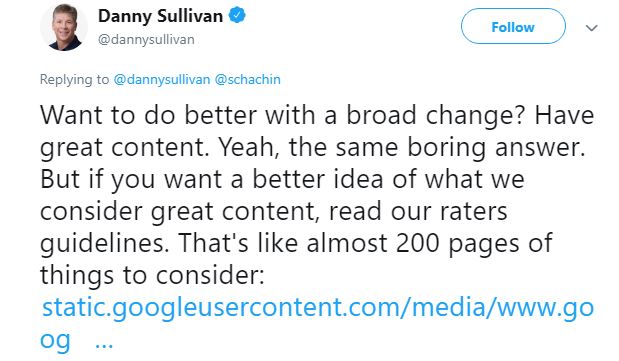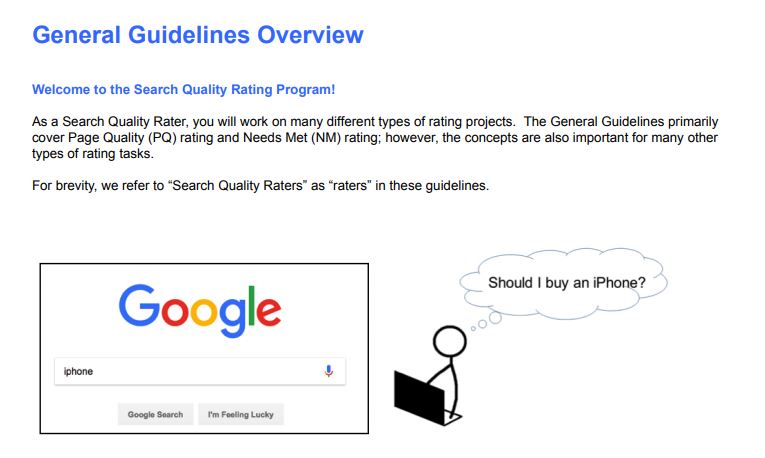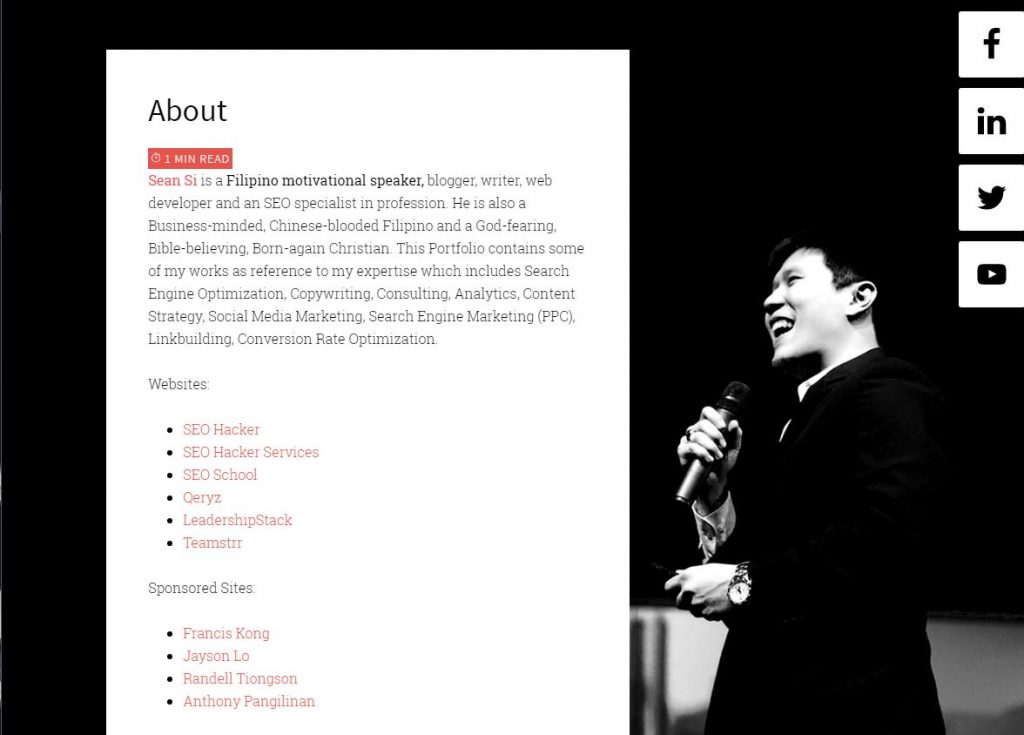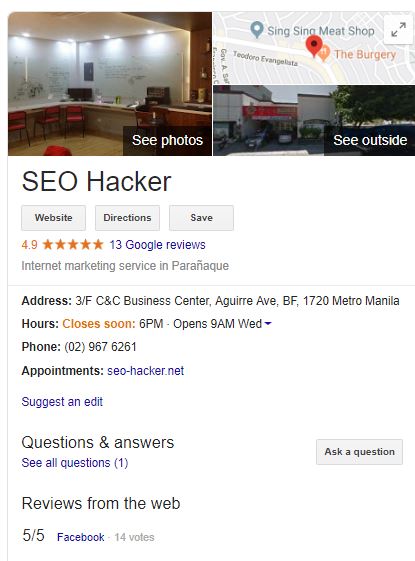Everything You Should Know About E-A-T
Expertise, Authority, and Trust, or better known as E-A-T is now a famous standard that SEOs try to follow. Two of the biggest algorithm updates from the past year gave more attention to E-A-T, the Medic Update on August 2018 and the Google June Broad Core Update on June 2019.
Many of the websites that were hit were said to have low E-A-T. When asked how can they recover, you’ll probably get the same answer from experts and even from Google’s Search Liaison Danny Sullivan over and over again.

Great content. Something that everyone is trying to do but a few is able to achieve. When someone says “create great content”, it’s honestly not much of an advice, but in this tweet from Danny Sullivan in 2018, he referred to the Google Quality Raters Guidelines that talked about what we call today as E-A-T.
In this article, I’ll be taking a deep dive into E-A-T to better understand what really does Google mean by great content and how do they judge it and a bit of historical background to how it all started.
Google+ AuthorRank
Do you remember AuthorRank? If you’ve been doing SEO since 2012, then you’ve probably heard of it.
Back in 2013, I wrote an article on AuthorRank. It was the time when lots of false and spam content was circulating around the internet and Google had to take steps to better identify real content from real authors. At the same time, Google also released Google Authorship where the name and icon of the author appear along in the search results.

AuthorRank pulled up data of webmasters from their Google+ profile. Before, you can add a short authorship markup rel=”author” where you can link your Google+ profile to the content you publish on your website. It was a popular on site optimization factor before. But as you know, Google+ has shutdown but if you are interested in checking this out, you could take the time machine and read this post on Google Authorship Markup in 2012.
So why did I bring this up? In my opinion, AuthorRank is one of Google’s stepping stone in coming up with E-A-T. It touches on the importance of having a good online reputation, far different from technical SEO factors like links and meta tags. At least we know that E-A-T is a long time coming. Since the boom of AuthorRank in 2012, Google has been trying to find a better correlation between good content and a good author.
There were different ways to measure AuthorRank before. One of which was on how many +1 you received in Google+ and how many people add you in their Circles. Social media presence was also a factor and of course, backlinks.
Google ended their 3-year experiment with Authorship in 2014 but many said that AuthorRank is still alive.
Google Medic Update
In early August 2018, just a month after Google announced the revised version of the QRG, a huge core algorithm update was released. Many websites reported that they were hit hard. Most of those are health/medical websites hence the name Google Medic Update.
Panic was in the air. Webmasters here and there were asking “how can we recover?”. But apparently, there was no “fix”. Then, E-A-T took the spotlight.
Marie Haynes, an expert Google Algorithm Changes and E-A-T, pointed out the qualities of the website that were hit does not adhere to E-A-T standards. In her example, an author named Bridget Montgomery wrote a review of Top 10 Glucose Meters. However, when you go to the author’s profile, there were no information that the author is an expert in the medical field, just a list of articles she published.

Even though many websites were hit, Marie also pointed out that there were websites in the same niche that had these qualities have gained:
- Clear identity of authors of the articles
- Main purpose of website content is to inform not to sell
- Lots of signs of authority such as comments and reviews
Because of correlations such as these, people started theorizing that E-A-T is a ranking factor. Many counted out this theory, however, in another post by Marie Haynes, she pointed out that a whitepaper that Google published in February 2019 on their fight against disinformation confirms that E-A-T is indeed a ranking factor.
Google Quality Raters Guidelines
In 2015, Google released the full version of the Quality Raters Guidelines or QRG that contain the criteria in evaluating a website hence called the “Google Quality Raters Guidelines”. It was revised in June 2018 and was last updated on May 2019.
To help evaluate each website on its index, Google contracted more than 10,000 employees to evaluate pages that appear in the search results especially those in the top pages. They are called the “Quality Raters”.

Quality Raters cannot directly affect a website’s rankings. When a page is given a low-quality score, it does not lose all of its rankings and traffic overnight. However, the data from Quality Raters are used for further improvements in Google’s search algorithm.
The QRG taught Quality Raters on the factors they need to consider when judging a page’s Page Quality (PQ). It talks about reputation, quality of a page’s main content, samples of low-quality pages, and of course, the E-A-T.
In section 3.2, the QRG first mentioned E-A-T. It said that websites or pages the don’t have any purpose or benefits for users should receive the lowest Page Quality (PQ) rating. However, for those websites or pages that provide value to users, the amount of E-A-T is important and Quality Raters should consider the following:
- The expertise of the creator of the Main Content (MC)
- The authoritativeness of the creator of the MC, the MC itself, and the website
- The trustworthiness of the creator of the MC, the MC itself, and the website
Optimizing for E-A-T
Now that we know what E-A-T is and the importance of it in today’s SEO landscape, the next question is, how do you optimize for it?
The first thing you should know is that there is no way to know what your E-A-T rating is or if your website has been rated by a Quality Rater. What you could do is continuously build your reputation. Here are a few steps you could do:
-
Author Profile
To Google, high-quality content must come from an expert of the topic an author is writing about. There are topics that only specific experts in certain fields can write and provide valuable information about.
In section 3.2 of the QRG, it stated a few examples of this:
- High E-A-T medical advice should be written or produced by people or organizations with appropriate medical expertise or accreditation.
- High E-A-T news article should be produced with journalistic professionalism
- High E-A-T information pages on scientific topics should be produced by people or organizations with appropriate scientific expertise and represent a well-established scientific consensus on issues where such consensus exists
From these bullets alone, it’s easy to say that before you write for a certain topic, you should be an accredited expert on that matter. Author pages or Author bios play a huge role in this. It should be clear in your profile your field of expertise and links to your other social profiles should be included.

Links are and always have been a measure of authority. It is a no brainer that to be considered authoritative, you need links. Also, note that it’s not just about anchor texts. When other websites are citing your name or your business or website’s brand as a source in an informative article from a relevant website, your website is gaining more authority.
While links are ideal, do not count out unlinked mentions. Being mentioned in news articles or other articles also count. Yes, you could still take your time to let the webmaster know that they didn’t link to your website when they mentioned your name, but it still gives you value anyway.
You could use tools like Google Alert that will notify you if your name or brand is mentioned around. You could also use Google Trends to monitor how your brand is doing.

-
Reviews
Reviews play a huge role in establishing trust in your website. In section 2.6.1 of the QRG, it says that Quality Raters should do research when rating a website to look for what real people think of it.
“Look for reviews, references, recommendations by experts, news articles, and other credible information created/written by individuals about the website.”
If you have a business, make sure it is listed in legitimate local directories where you can ask clients and other users for reviews. Your number 1 target should be getting a verified Google My Business listing.

Key Takeaway
Moving forward, E-A-T will play a huge role in Google’s future algorithm changes knowing that the data Quality Raters produce are used for algorithm improvements. While you can never know how your website is evaluated, following these guidelines should be part of your foundational SEO strategy.
